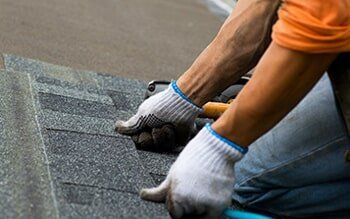FAQ Breakdown About honolulu roofing materials for Island Homes
The Ultimate List for Roof Covering Install: Ensuring Quality and Durability
The process of installing a roofing needs cautious interest to information. A comprehensive checklist can help assure top quality and resilience throughout the project. From evaluating the existing roof problem to picking the ideal materials, each action is crucial. Proper preparation and devices play an important function in attaining an effective setup. Numerous neglect the importance of last assessments and recurring maintenance. Understanding these components can significantly influence the durability of a brand-new roofing.
Evaluating Your Present Roofing Condition
Exactly how can one efficiently establish the problem of their present roofing? A complete evaluation is crucial for examining a roof's stability. Homeowners should start by examining the roofing from the ground, seeking visible signs of wear such as missing roof shingles, drooping locations, or staining. Closer evaluation can be done by accessing the roof itself, where one must examine for broken or curled tiles and examine blinking around vents and chimneys.Additionally, the inside of the home warrants focus; water discolorations or mold and mildew growth on ceilings and wall surfaces may suggest leakages. Attic inspections can reveal prospective concerns, such as inadequate air flow or signs of moisture.Regular examinations, preferably twice a year, can help determine issues early and prevent costly repairs. By comprehending the roofing's existing state, homeowners can make informed decisions about required maintenance or replacements.
Selecting the Right Roofing Products
When picking roof covering materials, what aspects should homeowners think about to guarantee a sturdy and reliable selection? The environment plays a substantial role; materials must withstand regional weather condition conditions, whether it's hefty rain, snow, or extreme sunlight. Next off, the durability of the product is important; choices like steel or slate deal extended lifespans compared to asphalt tiles. House owners need to likewise examine the product's weight, as this can influence the structural integrity of the home. Additionally, visual appeals issue; the chosen product must match the overall architectural design. Energy performance is one more factor to consider; some products show heat, decreasing air conditioning prices. Ultimately, budget plan restraints will determine choices; while some materials might have a reduced upfront cost, long-lasting toughness can cause greater cost savings. By weighing these variables, home owners can make informed decisions that improve their roofing system's high quality and long life.
Getting ready for Installation
Prior to the setup procedure begins, home owners should guarantee that their home is adequately prepared to fit the new roofing. This preparation entails numerous crucial actions to assure a smooth and effective installation. Homeowners need to remove the location around the house of any debris, tools, or furniture that might hinder access for professionals. Furthermore, it is essential to inform next-door neighbors regarding the future job to minimize disruption and safe cooperation.Next, home owners need to evaluate their existing roofing and structural elements, resolving any possible problems such as rotting wood or leakages that can impact the installment. Safeguarding necessary authorizations and adhering to regional building codes is vital for conformity and safety and security. Setting up the installment throughout desirable weather condition problems helps stop hold-ups and guarantees that the work proceeds without issues. Appropriate prep work sets the foundation for a successful roof covering task, inevitably boosting the durability and effectiveness of the new roofing system.

Crucial Tools and Tools
In roofing setup, having the right devices and tools is important for an effective job. This consists of essential security gear, numerous roof covering installation tools, and efficient material managing tools. Correct preparation and selection of these items can considerably boost performance and security on the task site.
Security Gear Requirements
Security gear is an essential element of any roofing system installment task, ensuring the health of workers at raised elevations. Vital safety and security devices consists of difficult hats, which protect against dropping particles, and safety and security goggles to protect the eyes from dust and bits. Non-slip footwear is significant for preserving grasp on high surface areas, while harnesses and lanyards supply loss defense, stopping severe injuries. Gloves aid safeguard hands from sharp products and minimize exhaustion throughout extended durations of work. Furthermore, high-visibility vests enhance exposure, advertising understanding among employee and nearby workers. Using ear defense might also be a good idea in loud environments. Generally, sticking to security equipment demands is essential for a secure and efficient roof covering setup process.

Roof Covering Installment Devices
Correct precaution lay the foundation for an effective roof covering project, however having the right tools and equipment is equally important. Essential devices for roof covering installment include a ladder, allowing secure accessibility to the roof covering, and a roof nail gun to assure effective and safe fastening of products. A chalk line is essential for noting straight lines, while an utility knife is essential for reducing roof materials accurately. Additionally, a pry bar help in removing old shingles. Employees need to likewise have a level to validate appropriate positioning and drainage. Ultimately, a great pair of job handwear covers safeguards hands while providing grip. Together, these devices help with a smooth roof procedure, enhancing both top quality and durability.
Material Handling Tools

A selection of product handling equipment is important for a reliable roof covering installation procedure. Devices such as forklifts, lifts, and dollies assist in the motion of heavy materials like roof shingles and underlayment to the task site and onto the roof. Using scaffolding and ladders guarantees secure accessibility to elevated locations while reducing the danger of injury. Tarpaulins and bins are needed for correct storage space and organization of materials, preventing damage and guaranteeing simple access. In addition, a crane may be required for larger roof covering projects to lift considerable products directly onto the roofing system. Appropriate training in utilizing this tools is necessary; it enhances workflow efficiency and adds to general job safety and security, ensuring an effective roofing setup.
Step-by-Step Setup Refine
The detailed installment procedure is essential for a successful roofing system installation. It begins with preparing the roof covering surface, complied with by the correct installment of underlayment, and wraps up with the reliable safeguarding of roof covering products. Each of these actions plays a vital duty in making certain the resilience and functionality of the roofing system.
Prepare the Roofing System Surface Area
Preparing the roofing surface area is vital for making sure a successful installation of roof covering products. This procedure begins with a comprehensive evaluation to identify any kind of existing damages or debris. Any loose roof shingles, extending nails, or old roof materials should be removed to develop a tidy, smooth foundation. Next off, the roofing deck must be inspected for rot or structural concerns, as these can jeopardize the stability of the brand-new roof. After repairs, an extensive cleaning is necessary; this consists of sweeping away dust, leaves, and any other pollutants that could hinder attachment. Lastly, guaranteeing correct drainage and air flow is important, as these elements influence the long life of the roof covering. A well-prepared surface sets the stage for perfect installation and toughness.
Install Underlayment Effectively
Setting up underlayment appropriately is essential for boosting the general efficiency of the roof. The process starts with selecting the suitable underlayment product, which can consist of felt, synthetic, or rubberized alternatives. Next off, confirm the roofing surface area is clean and dry before laying the underlayment - commercial roofing honolulu. Begin at the most affordable factor of the roofing system, rolling out the underlayment horizontally and overlapping each row by a minimum of six inches. It is very important to secure the underlayment in location with staples or roof nails, staying clear of gaps or creases that might endanger water resistance. Finally, trim excess product at the sides, guaranteeing a neat finish. This thorough setup step is essential for providing an included layer of defense against wetness and improving durability
Secure Roofing Materials Efficiently
After confirming the underlayment is correctly installed, the next action entails securing the roof materials effectively. Initially, the professional roofer must collect all required materials, consisting of roof shingles, nails, and blinking. Beginning at the cheapest point of the roofing, shingles need to be stocked a staggered pattern, verifying correct overlap to prevent leaks. Each tile has to be secured with nails, using the supplier's advised spacing and amount. It is vital to drive nails directly, avoiding over-penetration, which can endanger the material. Flashing need to be set up around smokeshafts and vents to improve waterproofing. Ultimately, the specialist ought to perform a complete evaluation to verify all materials are firmly secured, as this will substantially influence the roofing system's total sturdiness and long life.
Conducting Final Assessments
Detailed final evaluations are important to ensure that a freshly installed roof covering satisfies all security and quality requirements. This vital action entails reviewing the whole roof covering system for any kind of potential concerns that may emerge post-installation. Inspectors ought to examine the alignment of roof shingles, making sure they are properly safeguarded and totally free from flaws. Blinking and air flow systems need to likewise be evaluated for proper setup and functionality.Additionally, the examiner ought to inspect rain gutters and downspouts to verify they are properly positioned to assist in water drain. Any type of indications of leaks, misaligned products, or insufficient sealing around penetrations should be addressed instantly. Roofing professionals should also see to it that all debris from the installment process is gotten rid of, leaving the site clean and risk-free. Performing these extensive examinations aids stop future complications, eventually expanding the life-span of the roof and providing property owners with comfort concerning their financial investment.
Keeping Your New Roof Covering
Appropriate maintenance is vital for assuring the long life and performance of a new roofing. Homeowners should perform regular inspections at the very least twice a year, ideally in springtime and autumn, to determine prospective concerns early. Throughout these assessments, they must try to find indicators of damage, such as missing out on shingles, leakages, or debris accumulation, which can impede drainage and promote mold growth.Cleaning rain gutters and downspouts is necessary, as blocked systems can lead to water damage and architectural issues. In addition, trimming overhanging branches can prevent abrasion and debris accumulation on the roofing surface.It's website also suggested to set up specialist evaluations every few years to examine the roofing system's condition completely. Maintaining documents of maintenance tasks and repairs can help track the roof's performance over time (roofing contractors honolulu). By adhering to a regular maintenance routine, homeowners can protect their financial investment and assure their brand-new roofing stays efficient for years to come
Frequently Asked Concerns
How Long Does a Normal Roofing Setup Take?
The duration of a typical roof covering installment varies based on factors such as roof dimension, materials, and weather. Normally, it can take anywhere from eventually to a number of weeks to finish the installation.
Can I Mount a New Roof Over an Existing One?
The question of setting up a brand-new roof over an existing one commonly arises. Lots of house owners consider this option for cost-effectiveness, yet it is important to evaluate neighborhood structure codes and the architectural honesty of the existing roofing system.
What Allows Are Needed for Roofing Installation?
Before setting up a roofing system, one should check local policies. Commonly, structure licenses are called for, together with evaluations to guarantee compliance with security standards and zoning legislations. Consulting with local authorities is necessary for proper assistance.
What Guarantees Are Available for Roof Covering Products?
Numerous guarantees exist for roofing products, commonly including maker guarantees covering problems and performance. Furthermore, some professionals use handiwork service warranties, making sure installment top quality. Buyers must meticulously review terms to recognize protection duration and constraints.
Exactly How Can Weather Impact the Installment Process?
Climate significantly influences the setup procedure, as rain, snow, or extreme temperatures can postpone job, affect material bond, and compromise safety. Correct planning and organizing around weather prediction are vital for successful roofing system installation.